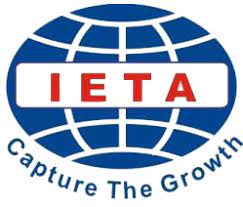Teacher Voices of Gender Representation in EFL Textbook: A case Study in a Senior High School
 ), Sonya Puspasari Suganda(2),
), Sonya Puspasari Suganda(2), (1) Universitas Indonesia
(2) Universitas Indonesia
 Corresponding Author
Corresponding Author
Copyright (c) 2023 Lingua Didaktika: Jurnal Bahasa dan Pembelajaran Bahasa
DOI : https://doi.org/10.24036/ld.v17i2.126204
Full Text:
 Language : en
Language : en
Abstract
Keywords
References
Ait Bouzid, H. (2019). Gender issues in select moroccan ELT textbooks: A review. Research in English Language Pedagogy (RELP), 7(2), 209-231.
Aljuaythin, W. (2018). Gender representation in EFL textbooks in saudi arabia: A critical discourse analysis approach. International Journal of Applied Linguistics & English Literature, 7(5), 151. https://doi.org/10.7575/aiac.ijalel.v.7n.5p.151
Ariyanto, S. (2018). A portrait of gender bias in the prescribed indonesian ELT textbook for junior high school students. Sexuality & Culture, 22(4), 1054-1076. https://doi.org/10.1007/s12119-018-9512-8
Canale, G., & Furtado, V. (2021). Gender in EFL education: Negotiating textbook discourse in the classroom. Changing English, 28(1), 58-71. https://doi.org/10.1080/1358684X.2020.1812377
Creswell, J. W. (2013). Qualitative inquiry and research design: Choosing among five approaches (3rd ed). SAGE Publications.
Creswell, J. W. (2014). Research design: Qualitative, quantitative, and mixed methods approaches (4th ed). Sage publications.
Creswell, J. W. (2015). Educational Research: Planning, conducting, and evaluating quantitative and qualitative research (5th ed). Pearson Education, Inc.
Gouvias, D., & Alexopoulos, C. (2018). Sexist stereotypes in the language textbooks of the greek primary school: A multidimensional approach. Gender and Education, 30(5), 642-662. https://doi.org/10.1080/09540253.2016.1237620
Gu, M. M., Chiu, M. M., & Li, Z. (2022;2021;). Acculturation, perceived discrimination, academic identity, gender and chinese language learning among ethnic minority adolescents: A structural equation modeling analysis. International Journal of Bilingual Education and Bilingualism, 25(7), 2454-2468. https://doi.org/10.1080/13670050.2021.1920882
Izzuddin, Dalimunthe, R. P., & Susilo, S. (2021). The portrayal of women in arabic textbooks for non-arabic speakers. SAGE Open, 11(2), 215824402110141. https://doi.org/10.1177/21582440211014184
Lee, J. F. K., & Mahmoudi-Gahrouei, V. (2020). Gender representation in instructional materials: A study of iranian english language textbooks and teachers’ voices. Sexuality & Culture, 24(4), 1107-1127. https://doi.org/10.1007/s12119-020-09747-z
Lestariyana, R. P. D., Widodo, H. P., & Sulistiyo, U. (2020). Female representation in government-mandated english language textbooks used in indonesian junior high schools. Sexuality & Culture, 24(4), 1150-1166. https://doi.org/10.1007/s12119-020-09752-2
Lindqvist, A., Sendén, M. G., & Renström, E. A. (2021). What is gender, anyway: a review of the options for operationalising gender. Psychology & sexuality, 12(4), 332-344. https://doi.org/10.1080/19419899.2020.1729844
Li, J. (2016). The transmission of cultural values via EFL textbooks in china. Journal of Educational Media, Memory, and Society, 8(2), 128-144. https://doi.org/10.3167/jemms.2016.080207
Menegatti, M., & Rubini, M. (2017). Gender bias and sexism in language. In Oxford Research Encyclopedia of Communication.
Mohammed Ismael Ismael, S., & Mohammadzadeh, B. (2022). Gender representation in EFL textbooks used in state schools in northern iraq and teachers' perceptions of gender role stereotypes. Interactive Learning Environments, ahead-of-print(ahead-of-print),1-18. https://doi.org/10.1080/10494820.2022.2029495
Sunderland, J., Rahim, F. A., Cowley, M., Leontzakou, C., & Shattuck, J. (1997). Gender in language textbooks: Looking beyond textual imbalance. Lancaster. Centre for Research in Language Education, Lancaster University.
Sunderland, J., Cowley, M., Abdul Rahim, F., Leontzakou, C., & Shattuck, J. (2000). From bias “In the text” to “Teacher talk around the text”: An exploration of teacher discourse and gendered foreign language textbook texts. Linguistics and Education, 11(3), 251-286.
https://doi.org/10.1016/S0898-5898(00)00034-6
Schudson, Z. C., Beischel, W. J., & van Anders, S. M. (2019). Individual variation in Gender/Sex category definitions. Psychology of Sexual Orientation and Gender Diversity, 6(4), 448-460. https://doi.org/10.1037/sgd0000346
Suwarno, Triyono, S., Ashadi, & Sahayu, W. (2021). Gender construction in the indonesian government-distributed english textbook: Combining critical discourse analysis and corpus linguistics. Sexuality & Culture, 25(6), 2158 2175.
Tyarakanita, A., Drajati, N. A., Rochsantiningsih, D., & Nurkamto, J. (2021). The representation of gender stereotypes in indonesian english language textbooks. Sexuality & Culture, 25(3), 1140-1157.
https://doi.org/10.1007/s12119-021-09813-0
Vu, M. T., & Pham, T. T. T. (2022). Gender, critical pedagogy, and textbooks: Understanding teachers’ (lack of) mediation of the hidden curriculum in the EFL classroom. Language Teaching Research : LTR, , 136216882211369. https://doi.org/10.1177/13621688221136937
Widodo, H. P., & Elyas, T. (2020). Introduction to gender in language education. Sexuality & Culture, 24(4), 1019-1027. https://doi.org/10.1007/s12119-020-09753-1
Xiang, R., & Yenika-Agbaw, V. (2021). EFL textbooks, culture and power: A critical content analysis of EFL textbooks for ethnic mongols in china. Journal of Multilingual and Multicultural Development, 42(4), 327-341. https://doi.org/10.1080/01434632.2019.1692024
 Article Metrics
Article Metrics
 Abstract Views : 355 times
Abstract Views : 355 times
 PDF Downloaded : 116 times
PDF Downloaded : 116 times
Refbacks
- There are currently no refbacks.
Copyright (c) 2023 Lingua Didaktika: Jurnal Bahasa dan Pembelajaran Bahasa

This work is licensed under a Creative Commons Attribution-NonCommercial 4.0 International License.










